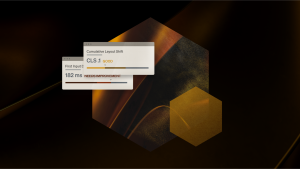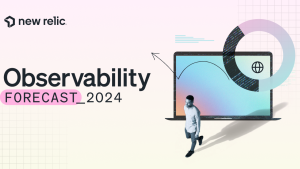The holiday shopping season is considered the Super Bowl of retail. Every second counts, and glitches come with price tags that can turn into million-dollar disasters. The median cost per hour of a high-impact outage now tops $1 million for retailers, according to a recent study by New Relic. When online shopping carts freeze, credit cards fail to process, or mobile apps slow to a crawl, brands face revenue loss and reputational damage.
If last year’s trends are any indication, online holiday spending could top $300 billion this season. However, with looming tariffs making margins razor thin, and sky high consumer expectations around personalized, always-on shopping experiences, the damage caused by any site downtime will be profound this holiday season. Retailers are preparing now by turning to observability and technologies like AI monitoring to keep their digital storefronts open and running smoothly.
AI Monitoring: From Optional to Essential
The retail industry was initially slow to adopt technology to predict and prevent outages, but an increasing number of brands are investing in tools like observability to keep their digital operations and AI deployments running smoothly. Our study found that:
- AI monitoring is on the rise. 54% of retailers use AI monitoring today to ensure the health of their AI applications, up from 35% a year ago, with another 24% planning to implement it within the next year.
- AI-powered predictive analytics is gaining ground in the industry. 45% of retailers already use predictive analytics, which enables them to anticipate and prevent potential system issues before they happen. Another 26% plan to adopt the technology soon.
But the increased adoption rate isn’t just about embracing technology for technology’s sake. Rather than reacting to outages after the fact, retailers cite the four top drivers behind their investment in observability platforms like New Relic’s:
- AI adoption and leveraging machine learning to enhance monitoring and speed incident resolution.
- Security, governance, risk, and compliance, helping to reduce exposure to threats and meet increasingly strict regulations.
- Cost management and minimizing waste from overprovisioned cloud resources and inefficient workflows.
- Customer experience management, ensuring seamless shopping experiences when it matters most.
The bottom line – the growing use of AI is driving retailers to seek solutions to monitor and observe the health of their systems and applications. New Relic’s intelligent observability platform works by deploying AI agents within digital applications to collect and send performance data to a central dashboard for analysis. This allows engineering teams, or in some cases the AI agents themselves, to detect anomalies, surface root causes, and even recommend or automate fixes before customers feel the impact.
Efficiency improvements are impactful because nearly half of retailers report at least one high-impact outage a month, which can result in losses of up to $4 million per hour, according to our recent study. Beyond lost revenue, outages drain engineering capacity. Leaders say their teams spend an average of 25% of their time managing disruptions instead of building new features.
Observability Prevents and Shortens Downtime
The primary reasons for retail outages remain stubbornly familiar: network failures, software deployment issues, and cloud or third-party provider failures. While those issues won’t disappear overnight, observability is making a measurable impact.
Retailers report up to 50% faster detection and resolution speeds since adopting observability. Leaders also report plans to further extend their use of observability with AI features in the future, citing three top use cases where AI would improve their brand’s incident response practice the most:
- AI-assisted troubleshooting to help teams diagnose issues before they escalate.
- Automatic root cause analysis to identify and resolve problems before users notice them.
- AI-assisted remediation actions, such as rollbacks or configuration updates, which could dramatically reduce mean time to resolution.
We are already seeing some of these benefits in action when it comes to AI monitoring within observability. For example, retailers reported using AI monitoring as a security tool to reduce exposure to cyberattacks and meet strict regulatory requirements. By acting as a digital first responder, AI helps retailers address issues in minutes instead of hours, often before customers ever notice.
Retailers See AI Observability as Holiday Insurance
In today’s AI-first, cloud-based world, complex retail systems have made human-only monitoring expensive and risky. Intelligent observability provides a predictive safety net that goes beyond traditional monitoring tools. It surfaces issues even where you haven’t thought to look, recommends fixes, and, in many cases, automates resolution.
For retailers, that’s the difference between a smooth holiday season and one plagued by glitches. The investment pays for itself by preventing downtime, protecting revenue, and enhancing customer loyalty. In retail, performance issues don’t just affect the backend—they show up as abandoned carts, missed sales, and frustrated shoppers.
If you’re heading into peak season without AI-powered observability, you’re gambling with your most important quarter. The good news? It’s not too late to get ahead of the rush.
Learn more about how New Relic can help you keep your digital storefront running flawlessly this holiday season.
Research Methodology
New Relic partnered with Enterprise Technology Research (ETR) to survey 147 IT and engineering teams and leaders at retail/consumer facing organizations worldwide. Respondents are from 23 countries. The survey was conducted in April and May, 2025.
The views expressed on this blog are those of the author and do not necessarily reflect the views of New Relic. Any solutions offered by the author are environment-specific and not part of the commercial solutions or support offered by New Relic. Please join us exclusively at the Explorers Hub (discuss.newrelic.com) for questions and support related to this blog post. This blog may contain links to content on third-party sites. By providing such links, New Relic does not adopt, guarantee, approve or endorse the information, views or products available on such sites.



